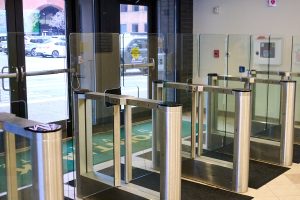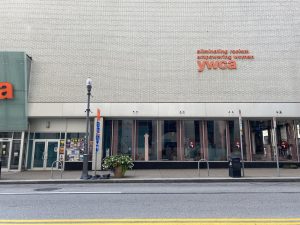Trump’s lift on military gear for police: is it the best option?
September 5, 2017
In his recent endeavors, President Donald Trump has considered lifting limits on military gear for police.
The decision is being made in response to increased domestic violence, mostly that of terrorism, shootings and violent protests.
By lifting these limits, police would be able to use old military gear, including bayonets, armed aircraft and tear gas.
In Trump’s eyes, the action would repurpose old military materials, thus avoiding waste, and would also increase public safety in general.
However, the consideration has instead raised many public concerns. Some citizens and politicians representing civil rights groups equally believe that the action would only further instigate extremist groups on all sides of the spectrum. For example, the use of certain military gear in Virginia was believed to have further provoked Antifa to inflict damage on both people and property.
With tensions so high, it certainly begs the question if such action is necessary. After all, doesn’t the possession of high caliber ammunition, armored vehicles, and the access to weaponized aircraft seem a bit extensive on domestic soil?
Such an action is especially concerning, considering the events that have been occurring rapidly and in increased numbers in recent years. In the instance of Ferguson and later occurrences, the NAACP legal defense fund (LDF) made the case that the increase of police militarization led to numerous casualties, especially in regards to minorities.
The extensive nature of such an action seems a bit ironic. In what case would a bayonet or grenade launcher need to be used by a public officer, a defender of the peace?
Yet, it is undeniable that the rates and gravity of violence in the United States have heightened, especially over the past five years. Anyone can turn on the news and see a shooting or violent act, whether of protest or terrorism, being committed daily.
The current situation is in some ways similar to that of Shays’ Rebellion, a rebellion led by Revolutionary War veteran, Daniel Shays, from 1786 to 1787. The conflict occurred due to a perceived violation of the weak Articles of the Confederation in the ways of economic and civil rights.
At the time, the United States lacked the numbers and equipment needed to quell the violent actions conducted by Shay and his 4,000 men. Ultimately, the government decided to take drastic legislative steps in order to allow the federal military to take action when state conflicts occurred and reconfigure the Articles of the Confederation to ensure state rights.
Such action later led to the ease of their violence against citizens and property.
This past issue relates to now in many ways. Firstly, in order to resolve conflicts conducted by small groups, similar to modern terrorists and violent protesters, the government had to increase military action and change what was originally constitutional law. Secondly, such action eventually resolved the issue at hand.
It would only seem natural then, in the cyclical pattern of history, to take similar action with modern technology to hopefully have the same outcome. After all, with the ability of individuals to use violent gear in protests and acts of terror, it would make sense for police to have access to military gear in order to effectively protect themselves and the public.
However, due to such violence, easy provocation, public fear and the gravity of the situation, this action is most likely not the best option at this time.
Instead, it would be in the best interest of the Trump administration to consider all options before taking this action. In a perfect world, the best option would be to eliminate all violence and pursue peace on a federal and state level. Yet, due to human nature, it would be impossible to eliminate violence and protest from society.
Therefore, instead of taking such a drastic measure to increase police militarization, the administration should first consider other legislative options. This could include reviewing reasonable demands of protesters and creating laws or social programs to help ease their tensions.
In regards to terrorism, legislative action would not work, considering the radical beliefs and mindsets of said individuals. As of now, then, the administration should stick to current policy to combat terrorist acts instead of adding new policies that would only provoke violent parties further.
Perhaps these solutions will work. In such case, the United States may see a gradual shift in violent acts committed in our country towards peace.
On the other hand, if these legislative actions do not work, perhaps further arming policemen would be proven valid.
Regardless, the best thing the Trump administration could do at this time is to heavily consider all options before rushing into action.



















